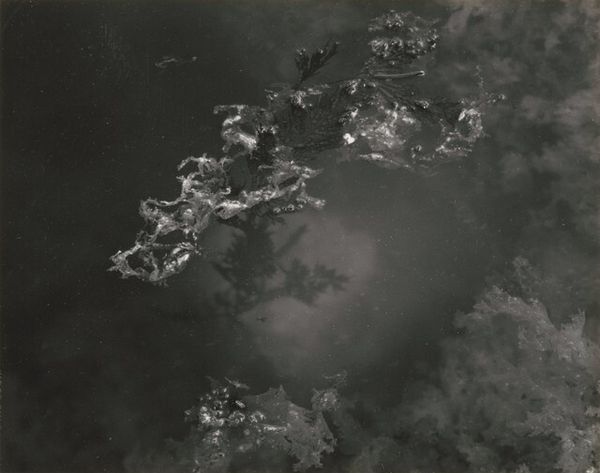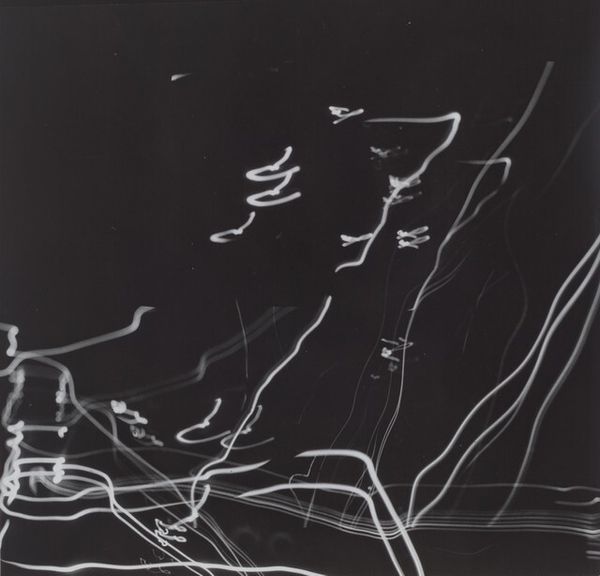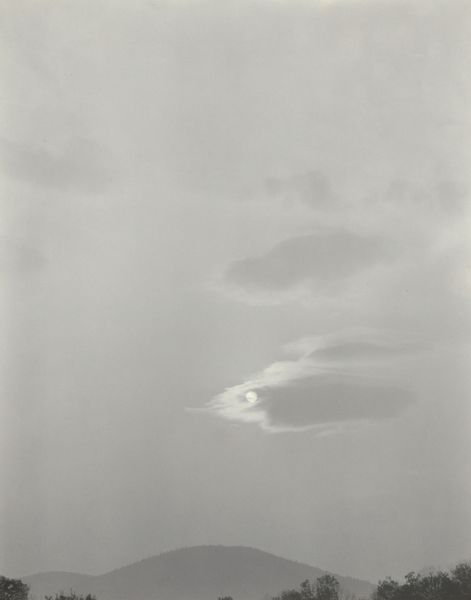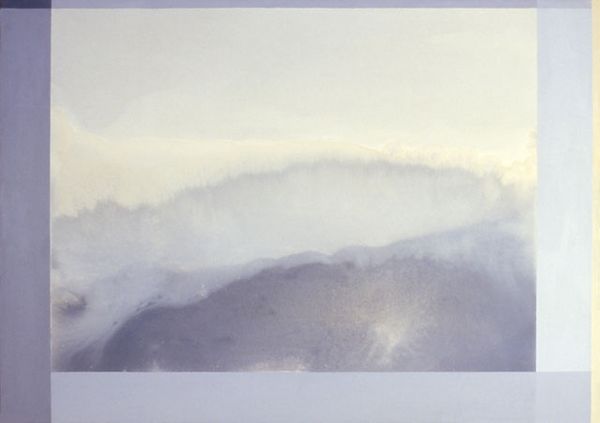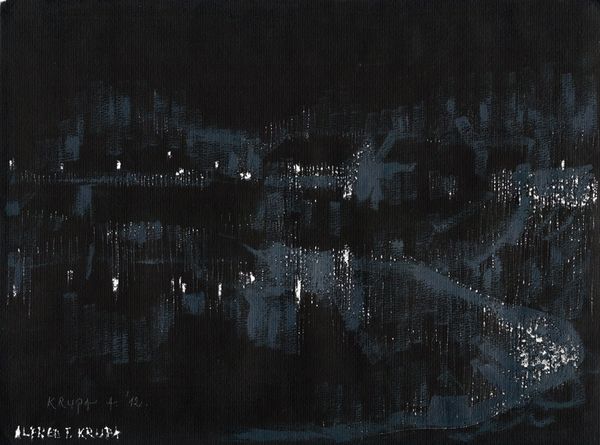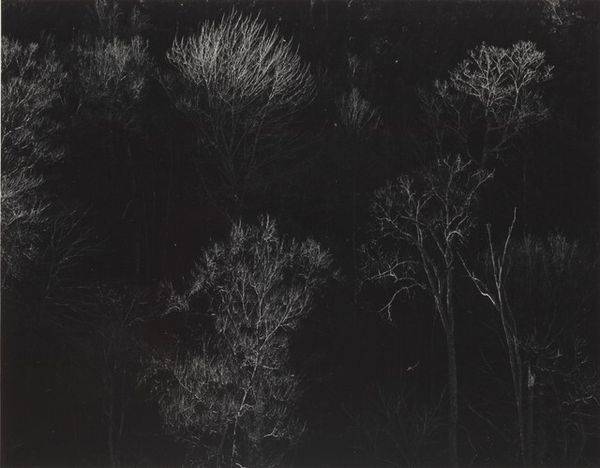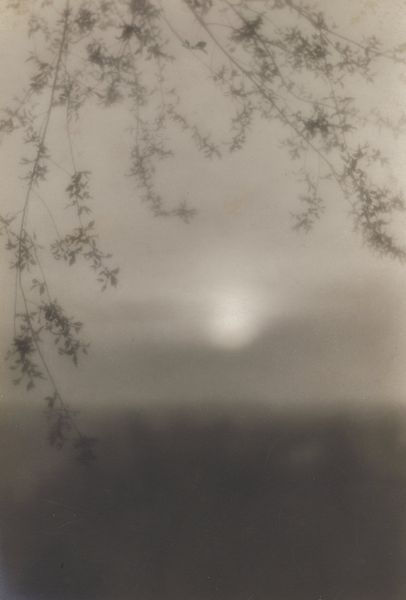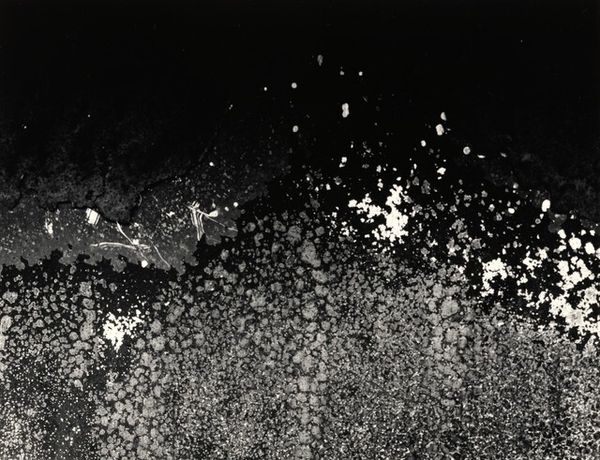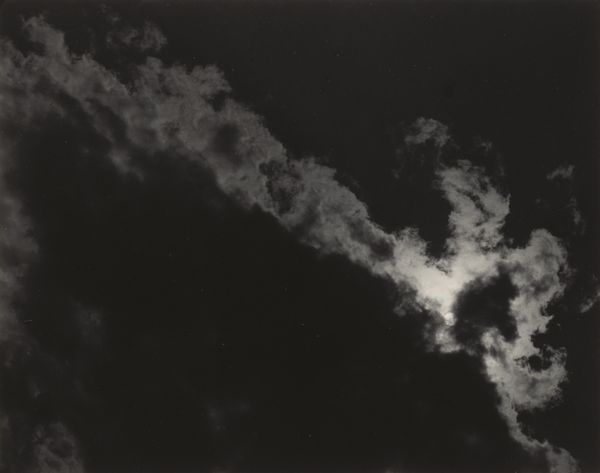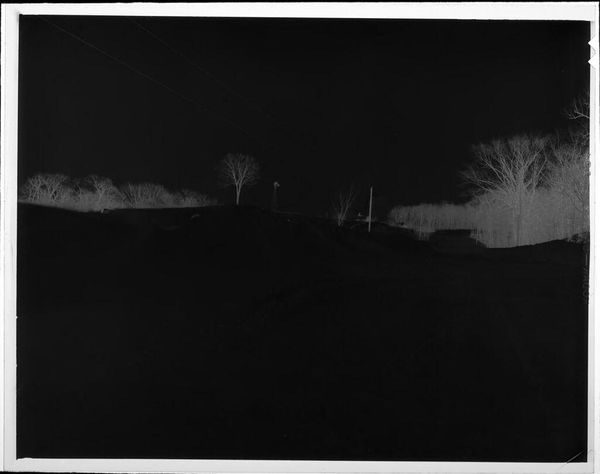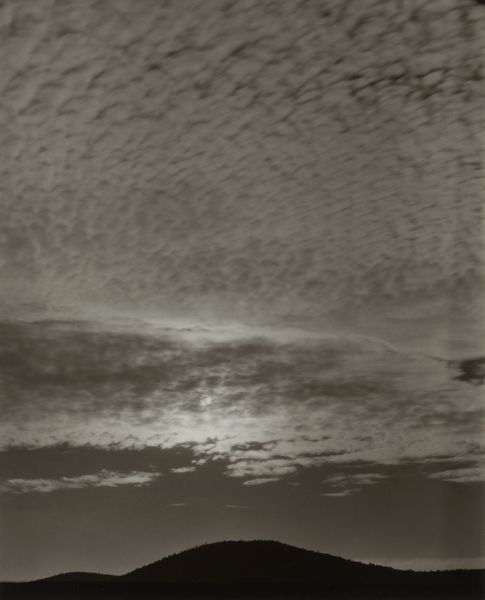
acrylic-paint
#
contemporary
#
landscape
#
acrylic-paint
Copyright: Peter Alexander,Fair Use
Curator: Standing before us is Peter Alexander's "Ceanothus," an acrylic painting completed in 2001. Editor: My first thought? Atmospheric. There's something deeply evocative about the way those blues bleed into each other, with small flares of light scattered about. It almost feels like looking into a dream. Curator: That pervasive blue certainly dictates the mood. It’s intriguing how Alexander employs such a limited palette to evoke this sense of depth, creating subtle yet pronounced tonal gradations within what appears, initially, as monochrome. Notice the hazy effect achieved in the upper register. Editor: True, those delicate color transitions work almost like a visual poem, drawing the viewer into a world where form is suggested more than strictly defined. Looking at the scattered highlights against that dark, looming foliage, you realize it reflects those glittering urban lightscapes along the Southern Californian coast and how they shape our lived environment. Curator: Precisely. Consider the semiotic relationship between the formal aspects and the subject matter. The light, fragmented and seemingly random, plays across the foliage and almost mirrors its broader social context, touching upon ideas about our transient human impact within our natural world. It introduces tension between nature and artifice. Editor: Absolutely, the brushstrokes create forms that only barely coalesce, adding an interesting perspective: the natural landscape is observed through the lens of contemporary experience, a modern world shaped and impacted by humanity’s touch, be it electricity, urbanization or the legacy of colonialism. This is also happening within the timeframe of massive transformations in contemporary art institutions— from a hermetic space to an exhibition complex of great cultural diversity. Curator: Yes. Alexander adeptly captures the way these societal conditions manifest— perhaps subconsciously. His command over tonal relationships encourages a complex viewing experience; and from a formalist viewpoint, each layer functions independently and harmoniously together. Editor: On reflection, viewing this painting not just as art, but a document— capturing this very particular, fleeting sense of the South California nightscape– adds immeasurable nuance. Curator: I appreciate the dialogue with broader societal concerns without forgoing fundamental principles that ground aesthetics. Editor: Indeed. What could initially read simply as visual beauty ends up raising much broader points worth reflecting upon.
Comments
No comments
Be the first to comment and join the conversation on the ultimate creative platform.


